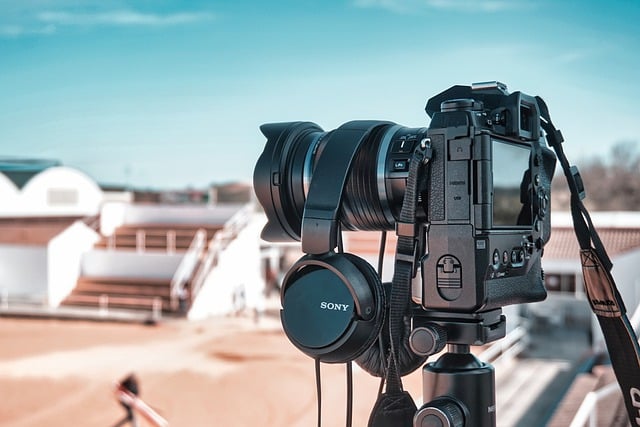Converting DivX to AVI format offers key advantages for video distribution and archival, ensuring wide compatibility on devices and platforms that support AVI. This process reduces file sizes while preserving quality, optimizing storage space, and enhancing online streaming and sharing performance. Advanced algorithms achieve a balance between size reduction and visual integrity, making it suitable for both personal and professional content.
Efficient video encoding and decoding are essential for seamless media consumption. This guide delves into the world of DivX and AVI formats, two popular video coding solutions. Understanding these formats is crucial for optimizing video content. We explore why efficient conversion between them is key, providing a step-by-step process to effortlessly convert DivX to AVI. Learn how this simple process can enhance your multimedia experience, ensuring compatibility across various devices and platforms.
Understanding DivX and AVI Formats

DivX and AVI are two popular video formats, each with its own advantages. DivX is known for its high compression rates, enabling efficient storage and streaming of videos while maintaining excellent quality. This format is often chosen for encoding videos for online distribution due to its ability to reduce file sizes without significant loss in visual clarity. On the other hand, AVI (Audio Video Interleave) is a widely supported container that can store various codecs, making it versatile for different video and audio combinations. It’s an excellent choice when you need to maintain compatibility across multiple platforms.
Converting DivX to AVI can be beneficial in several scenarios. For instance, if you have an older device or software that only supports AVI, converting your DivX videos ensures compatibility without sacrificing quality. This process allows users to enjoy their content seamlessly on a variety of devices and media players, making it a practical step for video distribution and archival.
Why Efficient Conversion is Key

In today’s digital age, where multimedia content is ubiquitous, efficient video conversion has become a paramount necessity. The ability to seamlessly convert DivX to AVI format offers numerous advantages. It ensures that users can access and enjoy their videos across various devices and platforms without compatibility issues. Efficient conversion processes also play a crucial role in optimizing storage space by compressing videos while preserving quality, which is ideal for media libraries.
When converting DivX to AVI, the key lies in achieving a balance between file size and video quality. This is especially important for online streaming and sharing, where larger files may hinder performance. Efficient conversion algorithms use advanced techniques to reduce unnecessary data without sacrificing visual integrity, making it perfect for a wide range of applications, from personal media consumption to professional content distribution.
Step-by-Step Guide: Converting DivX to AVI

Converting DivX to AVI is a straightforward process that allows for efficient video encoding and decoding. Here’s a step-by-step guide to help you through the conversion.
1. Choose a Reliable Converter: Start by selecting a reliable video converter software that supports DivX and AVI formats. Many free options are available online, such as HandBrake or VLC Media Player, which can handle various encoding tasks without compromising quality.
2. Load Your DivX Video: Open the chosen converter and locate the “Add” or “Import” button. Select your DivX video file from your device’s storage. Ensure the software recognises and loads it successfully.
3. Select AVI as Output Format: Once your video is loaded, navigate to the “Profile” or “Output Format” section. Choose the “AVI” format from the list of available options. This ensures your converted file will be in the Audio Video Interleave (AVI) format, which is widely compatible with various media players.
4. Adjust Encoding Settings (Optional): Depending on your converter, you may have the option to tweak encoding settings like resolution, bitrate, and audio quality. For simple conversions, using the default settings often delivers excellent results while keeping file sizes manageable.
5. Start Conversion: After making your selections, click “Convert” or a similar button to begin the conversion process. The software will transcode your DivX video into AVI format, creating a new file ready for playback or sharing.
The ability to efficiently convert DivX to AVI format is a valuable skill in today’s multimedia landscape. By understanding these formats and prioritizing efficient conversion, users can ensure smooth video playback across various devices and platforms. The provided step-by-step guide offers a straightforward approach to achieving this conversion, making it accessible for both novice and experienced users. Whether for personal or professional use, mastering the art of converting DivX to AVI empowers folks to navigate the digital realm with greater flexibility and control over their video content.
